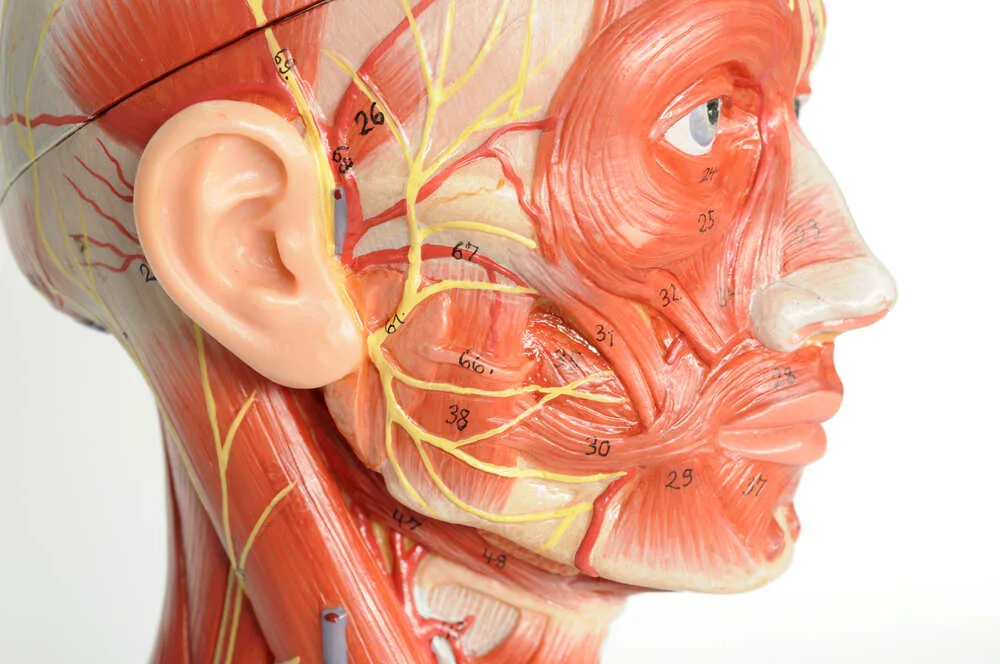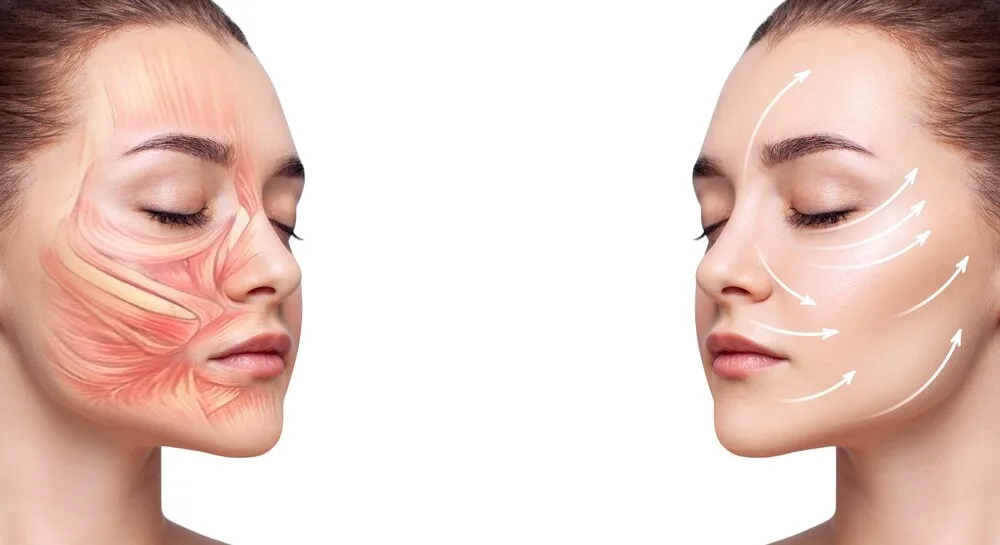New York Center for Facial Plastic Surgery
Schedule a consultation
Schedule today

Ever wondered what lies beneath the surface of your face?
Understanding the anatomy of your face is not just fascinating; it’s essential. Whether for medical professionals or anyone interested in cosmetic enhancements, a solid grasp of facial anatomy enriches your knowledge and can help guide decisions related to health and beauty.
This journey into the structure of your face will unveil the complexity and beauty of what makes us unique—and why precision matters in both medicine and aesthetics.
The face is made up of numerous layers, each playing its distinct role. Starting with the skin, the largest organ of the body, we see a complex structure comprising three main layers: the epidermis (outer layer), dermis (middle layer), and subcutaneous tissue (deepest layer).
The skin type (oily, dry, combination), texture (smooth, rough, pitted), and appearance (clear, acne-prone, pigmented) can vary widely across different areas of the face. For instance, the T-zone (forehead and nose) may be oilier as compared to the cheeks.
Some regions of the face, like the area around the eyes and lips, are particularly sensitive due to thinner skin and require gentle care to avoid irritation. Understanding these variations is crucial for effective skincare and treatment approaches, especially when considering cosmetic procedures.
Facial expressions are powered by a series of muscles that contract and relax to convey emotions. Notable among these are:
Each muscle intertwines with others, creating a network that allows for the nuanced expressions we make every day, from smiles to frowns.
Key players in the mechanics of chewing and jaw movement include:
These muscles influence not only how we eat but also the overall shape and aesthetics of the jawline.
Understanding these muscles’ functions helps in appreciating how subtle changes can alter one’s expressions and overall facial mood.
The facial artery, external carotid artery, and superficial temporal artery are key blood vessels that supply blood to the face. The health of these arteries is vital, as they deliver oxygen and nutrients that keep the skin and other facial tissues healthy.
Any disruptions in blood flow can affect the skin’s appearance and are crucial considerations during surgical procedures to ensure healing and minimize complications.
The facial nerve branches out across the face, controlling the muscles of facial expression. Damage to this nerve can result in loss of movement and asymmetry of facial expressions, which is why it’s a critical consideration in any surgical procedure.
Understanding its pathway is essential for surgeons to avoid nerve damage and maintain the integrity of facial expressions post-operation.
Many individuals opt to change their facial features for aesthetic and functional reasons, often driven by the desire for enhanced symmetry and proportion—key factors in perceived beauty.
For instance, modifying the upper lip to balance it with the lower lip or reshaping the zygomatic bone to enhance cheek prominence are common adjustments that contribute to fa more youthful appearance. Others seek changes to achieve facial harmony or correct features altered by aging, injury, or genetics. Knowledge of the names for parts of the face and anatomy muscles of the face is essential in these alterations.

Achieving successful outcomes in plastic surgery hinges on a detailed understanding of facial anatomy. Familiarity with the parts of the face anatomy, including the complex network of muscles of the face, blood vessels, and nerves, is crucial. For example, during a mini facelift, surgeons navigate around the branches of the facial nerve to avoid impacting facial expressions.
Additionally, knowing the locations and roles of the facial artery and external carotid artery is vital for maintaining adequate blood supply, essential for healing and successful results.
Discussing your specific facial structure with a knowledgeable, board-certified plastic surgeon like Dr. Jacono is crucial. A detailed consultation that examines individual facial features, considers the skin of the face anatomy, and addresses unique anatomical aspects sets the stage for identifying the best surgical procedures to achieve the desired results.
Surgeons tailor their approaches based on each patient’s unique anatomy, ensuring outcomes that are both beautiful and natural-looking.
Understanding the intricate details of the anatomy muscles of the face, names for parts of the face, parts of the face anatomy, and skin of the face anatomy is fundamental for anyone considering cosmetic enhancements. This knowledge ensures that interventions are performed safely, effectively, and in a way that honors the natural beauty of the individual.
Knowledgeable modifications that consider the unique face structures can lead to more satisfying results and higher patient satisfaction. Whether considering a subtle change or a significant adjustment, it is crucial to approach facial modifications with a well-informed perspective.
The ultimate goal of any cosmetic enhancement should be to reflect your inner beauty through the most harmonious and natural outward appearance.

Accessibility: If you are vision-impaired or have some other impairment covered by the Americans with Disabilities Act or a similar law, and you wish to discuss potential accommodations related to using this website, please contact our Accessibility Manager at (212) 570-2500 .